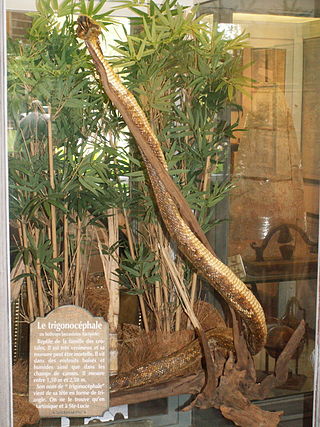
Bothrops lanceolatus — known as the fer-de-lance, Martinican pit viper, and Martinique lancehead — is a species of pit viper endemic to the Caribbean island of Martinique. Some reserve the common name fer-de-lance for this species, while others apply that name to other Bothrops species as well. No subspecies are currently recognized.

Bothrops leucurus, commonly known as the whitetail lancehead or the Bahia lancehead, is a species of venomous snake, a pit viper in the family Viperidae. The species is endemic to Brazil. There are no subspecies which are recognized as being valid. A female owned by youtuber Venom Central is over six feet long.
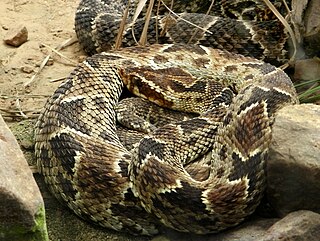
Bothrops barnetti, also known commonly as Barnett's lancehead and Barnett's pit viper, is a species of venomous snake, a pit viper in the subfamily Crotalinae of the family Viperidae. The species is endemic to Peru. There are no subspecies that are recognized as being valid.

Bothrops insularis, commonly known as the golden lancehead, is a highly venomous pit viper species found exclusively on the Ilha da Queimada Grande, off the coast of São Paulo state, in Brazil. The species is named for the light yellowish-brown color of its underside and for its head shape that is characteristic of the genus Bothrops. No subspecies of Bothrops insularis are currently recognized. It is one of the most venomous snakes in Latin America.
Bothrops pirajai is a species of venomous snake, a pit viper in the subfamily Crotalinae of the family Viperidae. The species is endemic to Brazil. There are no subspecies that are recognized as being valid.
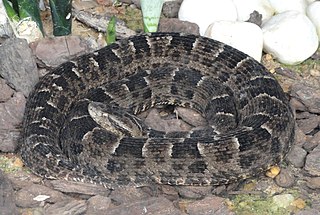
Bothrops neuwiedi is a highly venomous pit viper species endemic to South America. This relatively small snake has a wide range and is a major source of snakebite in Argentina. It was named after German naturalist Prince Maximilian of Wied-Neuwied (1782-1867), who made important collections in Brazil (1815-1817). Seven subspecies are currently recognized, including the nominate subspecies described here.

Craspedocephalus brongersmai, also known commonly as Brongersma's pit viper, is a species of venomous snake in the subfamily Crotalinae of the family Viperidae. The species is native to islands off the west coast of Sumatra, Indonesia. No subspecies are currently recognized.

Bothrops brazili is a venomous pitviper species endemic to South America. There are no subspecies that are recognized as being valid.

Bothrops cotiara is a species of venomous snake in the family Viperidae. It is endemic to Brazil and Argentina.
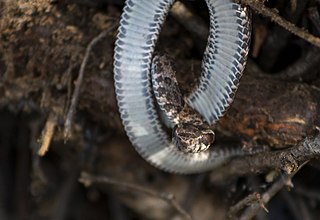
Bothrops erythromelas, commonly known as the Caatinga lancehead or the jararaca-da-seca, is a species of venomous snake in the family Viperidae. It is endemic to Brazil.

Bothrops lutzi, the Cerrado lancehead, is a species of venomous snake in the family Viperidae. The species is endemic to Central eastern Brazil. Within the country, it can be found in states such as: Minas Gerais, Bahia, Goiás, Tocantins, Piauí, and Ceará. The South American viper has sparked an interest from the scientific community due to its venom, as it is believed to have some therapeutic potential. Scientists have found that the venom carried by B. lutzi has antibacterial and antiparasitic effects, which can help fight against microbial resistance by medical patients, as well as parasitic diseases like leishmaniosis and Chagas’ disease.
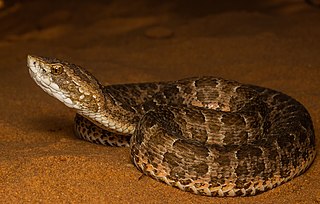
Bothrops itapetiningae, or the São Paulo lancehead, is a species of venomous snake in the family Viperidae. It is endemic to Brazil.

Bothrops jonathani, known commonly as Jonathan's lancehead or the Cochabamba lancehead, is a species of venomous snake, a pit viper in the family Viperidae. The species is endemic to South America.

Bothrocophias lojanus, also known commonly as the Lojan lancehead in English, and macanchi or macaucho in Spanish, is a species of venomous pit viper in the subfamily Crotalinae of the family Viperidae. The species is native to northwestern South America.
Bothrops marajoensis, or the Marajó lancehead, is a species of venomous snake in the family Viperidae. It is endemic to Brazil.

Bothrops moojeni, commonly known in English as the Brazilian lancehead, is a species of venomous snake in the family Viperidae. It is a pit viper endemic to South America.

Bothrops pictus, commonly known in English as the desert lancehead, is a species of venomous snake in the family Viperidae. The species is endemic to South America.

Bothrops sanctaecrucis, or the Bolivian lancehead, is a species of venomous snake in the family Viperidae. It is endemic to South America.

Bothrops venezuelensis, or the Venezuelan lancehead, is a species of venomous snake in the family Viperidae. It is endemic to South America.

Liotyphlops ternetzii beui is a species of nonvenomous snake in the family Anomalepididae. The species is native to northeastern Argentina, eastern Paraguay, and central-western, southeastern, and southern Brazil; the Reptile Database restricts its range to Brazil. It is locally common in Brazil. It is sometimes known as the pale-headed blindsnake.



















